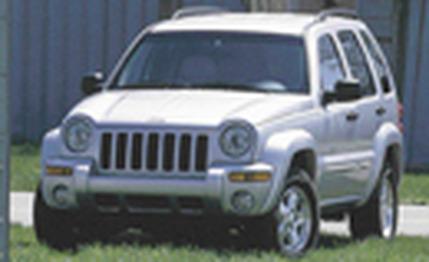
 Road Test
Road Test
You have to look pretty darn close to see one of the niftiest features of the 2002 Jeep Liberty. In fact, it helps if you have an electron microscope. Ours is currently being used as a planter, so we trusted a Liberty trim supplier, Textron Automotive, when it told us that if you train an electron microscope on some of the plastic trim pieces in the Liberty's cockpit while they're being made, you will see tiny flakes of nickel standing on edge.
What's nifty about that? Well, these are basically the same nickel flakes that ride around on the bumpers of 1958 Buicks underneath a layer of chrome. The difference is that engineers have learned in the intervening years how to get nickel flakes to stand on edge rather than just lie down flat during the electroplating process.
The technique shines up parts by bathing them first in copper and then applying an electric charge to attract succeeding layers of nickel and chrome. If the flakes sit on edge, the finish looks brushed instead of clear. Textron's boys just call it "satin chrome," and it beats most of the interior trim finishes we've seen lately, even the fabulous Macassar ebony wood-tone appliqué inside the 1978 Diamond Jubilee Edition Thunderbird ("2002 Ford Thunderbird," July 2001").
Of course, the electroplating process more than doubles the price of what is otherwise cheap plastic trim. But who cares? With its electroplated steering-wheel spokes, door-switch panels, door handles, and door locks (Sport models make due with black door handles and panel bezels), the cockpit of the Jeep Liberty Limited Edition looks like the polished innards of a Rolex and mimics the inside of a European two-seater. A German vehicle whose name begins and ends with "T" comes to mind.
Which is ironic since the handsome exterior panels also conjure up memories of the last Jeep model seen in great numbers in the Rhine valley. The ubiquitous MB/GPW of 1941-45 lives on in the Liberty's bug eyes and barbecue grille, its mud-encrusted ghost betrayed only by the seven slots in the Liberty's nose that recall the later M38 and CJ (MBs had nine-slot snouts).
Indeed, the Liberty fairly bristles with classic Jeep traits that don't require an electron microscope to see. We're thinking of the "uniframe" box-section steel frame integral to the body as on the current Cherokee, which remains in production for a few months concurrently with the launch of the Liberty, and the standard Command-Trac manual transfer case, which has a proper low range for steep climbs and descents. Selec-Trac with an automatic four-wheel-drive setting is a $395 option.
Also noted are the eight inches of front and rear suspension travel and the 38-degree-approach and 32-degree-departure angles that meet or exceed the old Cherokee's and beat those of nearly every other mini-ute tested in our "White Snow and the 11 Dwarfs" comparo (March 2001; the Kia Sportage had a better departure angle). Further separating the Liberty from its competitors and predecessor are the beefy cast-iron lower control arms of the admittedly un-Jeep-like independent front suspension and the live-axle rear suspension located by two stamped-steel trailing links and a central A-arm.
The Liberty seems rugged because it is. The company designed it to survive its nefarious Rubicon torture tests with nary a scratched fender. That will please hard-driving Cherokee owners craving more interior space and more power from the Liberty's optional 3.7-liter SOHC V-6 (standard on the Limited Edition), a new derivative of the Grand Cherokee's 4.7-liter V-8.